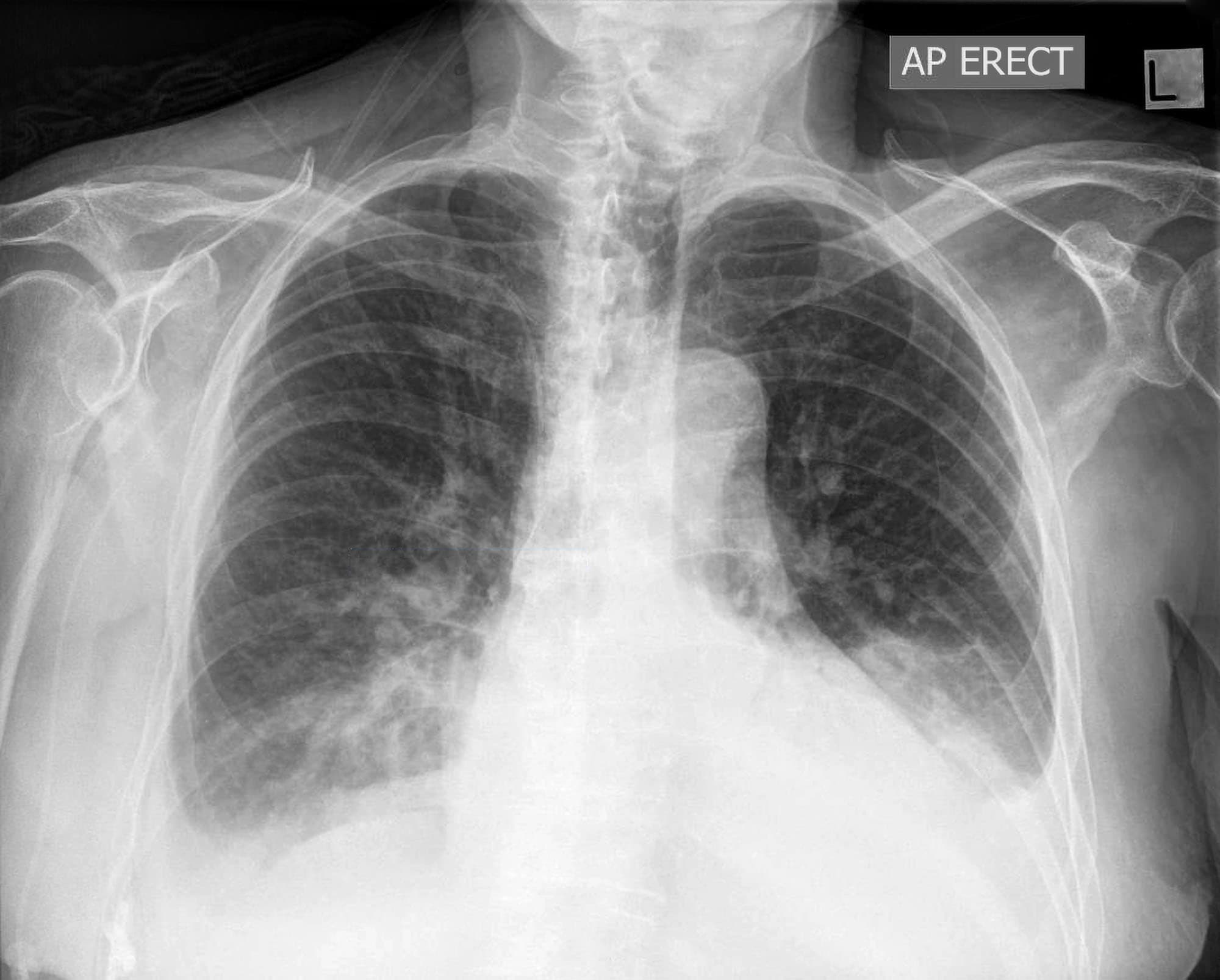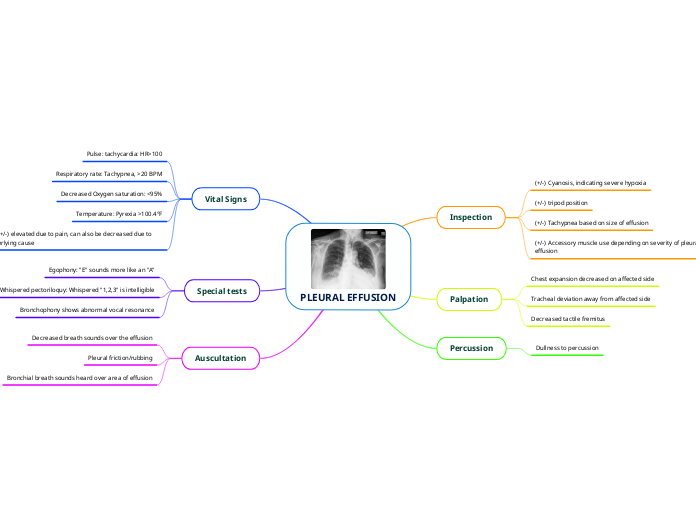
PLEURAL EFFUSION
Inspection
(+/-) Cyanosis, indicating severe hypoxia
(+/-) tripod position
(+/-) Tachypnea based on size of effusion
(+/-) Accessory muscle use depending on severity of pleural effusion
Palpation
Chest expansion decreased on affected side
Tracheal deviation away from affected side
Decreased tactile fremitus
Percussion
Dullness to percussion
Vital Signs
Pulse: tachycardia: HR>100
Respiratory rate: Tachypnea, >20 BPM
Decreased Oxygen saturation: <95%
Temperature: Pyrexia >100.4°F
BP: (+/-) elevated due to pain, can also be decreased due to underlying cause
Special tests
Egophony: "E" sounds more like an "A"
Whispered pectoriloquy: Whispered "1,2,3" is intelligible
Bronchophony shows abnormal vocal resonance
Auscultation
Decreased breath sounds over the effusion
Pleural friction/rubbing
Bronchial breath sounds heard over area of effusion
